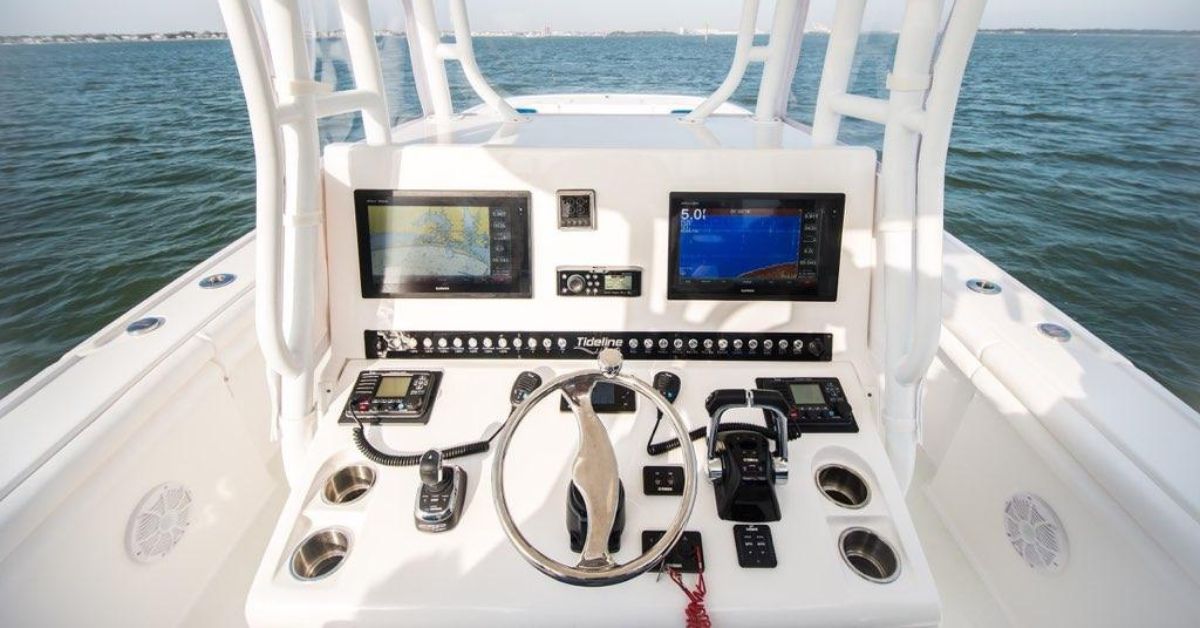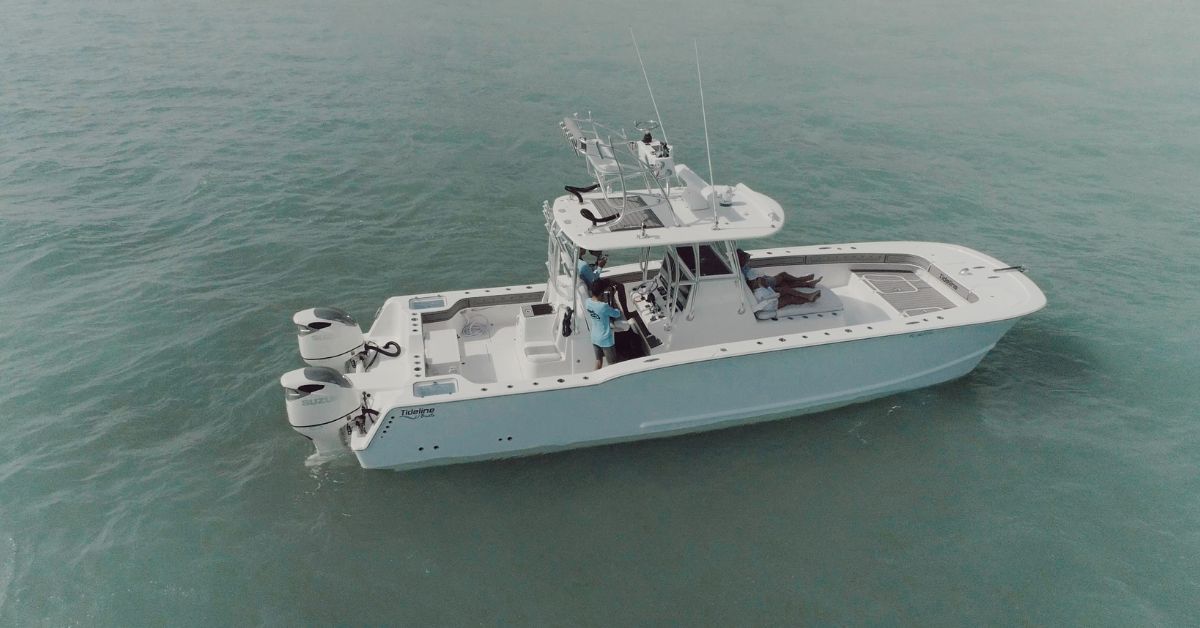Catamarans are a common sight on the water, known for their distinctive dual-hull design that offers stability and speed. Their popularity has surged among sailors, anglers, and leisure cruisers alike, thanks to the unique combination of performance, space, and comfort they provide. Understanding the anatomy of a catamaran is the first step toward appreciating what makes these vessels so special. This guide will walk you through the essential components of a catamaran, from its foundation to its complex systems, offering a clear picture of how these boats function.
Hull Design and Construction
The twin hulls form the foundation of any catamaran, determining everything from speed and stability to interior volume. Modern catamaran hulls feature sleek, narrow profiles designed to slice through water with minimal resistance. This streamlined shape allows catamarans to achieve impressive speeds while maintaining fuel efficiency.
Hull Materials and Durability
Fiberglass remains the predominant material for catamaran construction, offering an excellent balance of strength, weight, and cost-effectiveness. Advanced composite materials and carbon fiber reinforcements appear in high-performance models, reducing weight while increasing structural integrity. The manufacturing process typically involves vacuum infusion or resin transfer molding to ensure consistent quality and optimal strength-to-weight ratios.
Hydrodynamic Considerations
Each hull operates independently in the water, creating unique hydrodynamic characteristics. The narrow beam of individual hulls reduces wetted surface area, translating to less drag and higher potential speeds. The spacing between hulls, known as beam, directly affects stability and performance. Wider beam measurements increase initial stability but may compromise speed, while narrower configurations prioritize performance over ultimate stability.

Deck Layout and Features
The deck area of a catamaran is one of its most distinctive advantages over monohull designs. The bridging structure connecting the two hulls creates expansive outdoor living spaces that remain relatively level even in choppy conditions.
Cockpit and Social Areas
The main cockpit typically spans the width of the boat, providing generous seating and dining areas. This central gathering space often features wraparound seating, a large dining table, and easy access to both helm stations and cabin entrances. Many catamarans incorporate additional deck lounging areas forward of the main salon, taking advantage of the stable platform between the hulls.
Safety and Movement
Wide side decks and secure handholds facilitate safe movement around the vessel. The inherent stability of the catamaran design makes deck work less challenging compared to traditional sailboats. Lifeline systems and properly positioned cleats ensure crew safety during anchoring, docking, and sail handling operations.
Rigging Systems and Sail Configuration
Catamaran rigging systems must account for the unique stresses created by their twin-hull design. They also need to handle the typically higher performance expectations of these vessels.
Mast and Standing Rigging
The mast typically steps on a substantial compression beam that distributes loads across both hulls. This configuration requires robust engineering to handle the forces generated by large sail areas and high sailing speeds. Shrouds and stays attach to reinforced chain plates positioned to optimize load distribution while maintaining the structural integrity of each hull.
Sail Plans and Control Systems
Most cruising catamarans feature simplified sail plans with fully battened mains and large, efficient headsails. The wide beam allows for self-tacking jib systems on many models, reducing crew workload during maneuvers. Control lines typically lead to the helm stations, enabling single-handed sailing in many conditions.
Performance Considerations
The stability of catamarans allows for larger sail areas relative to displacement compared to monohulls. This increased sail-carrying ability translates to excellent light-wind performance and impressive speeds in moderate conditions. However, the design requires careful attention to depowering systems for heavy weather sailing.
Mechanical Systems Integration
The twin-hull configuration offers both opportunities and challenges for mechanical systems. This impacts both their initial installation and ongoing maintenance.
Propulsion Systems
Most catamarans feature twin engine installations, with one engine mounted in each hull. This configuration provides excellent maneuverability and redundancy. Saildrive units or traditional shaft drives connect to propellers positioned beneath each hull, offering precise control during docking and close-quarters maneuvering.
Steering and Control
Dual helm stations are common on larger catamarans, providing excellent visibility and control from either side of the cockpit. Steering systems may utilize cable, hydraulic, or electronic linkages connecting both positions to the rudders. Many modern catamarans incorporate joystick controls for engines and thrusters, simplifying boat handling.
Electrical and Plumbing
Electrical systems must account for the distributed nature of catamaran layouts, with battery banks, inverters, and control panels potentially located in different hulls. Fresh water systems often utilize pressurized tanks in each hull, while waste systems require careful planning to ensure proper function across the beam of the vessel.

Interior Spaces and Accommodation
The catamaran’s distinct hull design allows for unique interior layouts. This separation naturally maximizes privacy for occupants. It also contributes significantly to overall comfort aboard the vessel.
Cabin Configurations
Each hull typically contains separate cabin spaces, providing natural separation for guests or crew. Master suites often occupy entire hulls on larger vessels, while smaller catamarans might feature double cabins in each hull with shared facilities.
Central Living Areas
The bridging structure between hulls houses the main salon, galley, and navigation station. Large windows and the elevated position of this central area create bright, airy interiors with excellent visibility. The stable platform enhances comfort during meal preparation and relaxation.
Storage and Systems Access
The distributed nature of catamaran interiors requires thoughtful storage planning. Each hull provides dedicated space for different systems and equipment, while the central areas handle shared living functions. Access panels and service points must be strategically located for maintenance without disrupting accommodation spaces.
Understanding Your Perfect Vessel
Mastering the anatomy of a catamaran reveals why these vessels continue gaining popularity among discerning boaters. Each component works in harmony with the twin-hull design to create a unique platform that excels in comfort, performance, and versatility. From the hydrodynamic efficiency of the hulls to the spacious deck areas and well-planned interiors, every element contributes to the catamaran advantage.
While catamarans represent one approach to marine design excellence, the principles of thoughtful engineering and quality construction apply across all vessel types. At Tideline Boats, we apply these same standards of innovation and craftsmanship to create high-performance, custom offshore center console boats designed for serious fishing expeditions and leisure trips. Our commitment to understanding the unique requirements of each boating application ensures that every vessel we build delivers the performance, reliability, and comfort our clients demand on the water. Schedule a sea trial today to experience the difference for yourself!


